
Reading Italian language books is one of the best ways to learn the language.
It’s a marvellous way to familiarize yourself with common grammatical structures as well as build up a good vocabulary.
But reading can be daunting, especially for beginners.
You may be asking yourself a few questions:
- Where can I find an Italian book that interests me?
- What if this book is above my reading level?
- Is there really any benefit to reading Italian language books as a beginner?
- Why should I begin reading in a foreign language if you don’t even read that much in English?
In this article, I’ll cover all of these common questions.
To help you make a start, I’ve included a list of 7 great Italian language books I've enjoyed, that I know will both improve your reading skills and get you excited about learning Italian.
Pro Tip
By the way, if you're interested in learning Italian by reading, I've got a recommendation for you.
If you’re a beginner in Italian, my top recommendation is Italian Uncovered my in-depth online Italian course for beginners that teaches you through StoryLearning®.
This is both an Italian course and book all in one! And best of all, the story is especially for beginners. Claim your free 7-day trial of Italian Uncovered.
Table of Contents
7 Italian Language Books Worth Reading
If you prefer watching videos, hit play on the video version of the post at the top of this page. Otherwise keep scrolling to discover my book recommendations.
1. Italian Short Stories For Beginners by Olly Richards
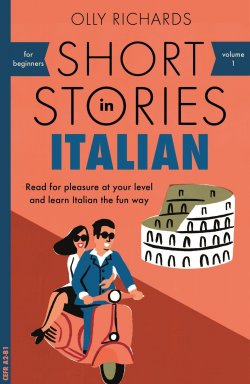
Level: Beginner
I realise that reading can be intimidating when you're starting out with a new language. That's why I've written a collection of short stories in Italian, especially for beginners!
If you're looking to read your first book in Italian, this is the perfect place to start.
The motivation to continue learning comes from a sense of progress and achievement. And that's why short stories like these are the perfect reading practice.
These fun, bite-sized stories are intended to grow your vocabulary and reading comprehension as well as increase your confidence reading Italian.
The stories cover lots of different genres and topics so they're entertaining as well as educational.
And if 8 stories aren’t enough to quench your Italian learning thirst, then there’s also a volume 2!
2. Short Stories In Italian: New Penguin Parallel Text edited by Nick Roberts
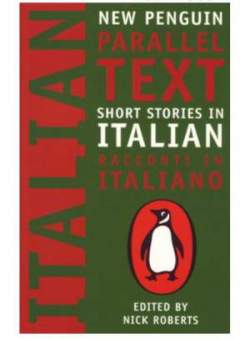
Level: Beginner/Intermediate
The great thing about parallel texts is that you can just glance at the next page to look up new words.
If you've ever tried to read in a foreign language before, you'll know that having to interrupt your relaxing reading to crack open a dictionary is very annoying.
In addition to solving this common problem, this volume of short stories is an excellent introduction to the Italian literature of the 20th century.
The editor has done a good job in curating stories that are accessible for readers at the beginner and intermediate levels while still being interesting to read.
These thought provoking tales deal with themes such as the boredom of married life, the holocaust, teen pregnancy and the dystopian dominance of TV culture.
They certainly make you contemplate not only the language but also the rich and varied scope of Italian literature.
3. Le Avventure di Pinocchio by Carlo Collodi
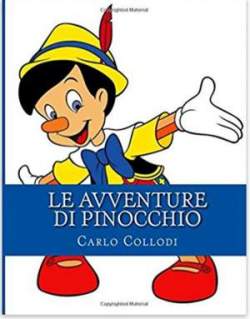
Level: Intermediate
The story of Pinocchio is perhaps the most well-known work of Italian children’s literature.
Like most stories adapted into Disney films, the original story is quite different from the version we're used to.
Pinocchio is a wooden puppet who gets tricked into running away from home.
To get back home to his father Geppetto, he embarks on a series of mischievous adventures aided by a kind fairy and a talking cricket who helps him distinguish right from wrong.
Through the course of his journey, Pinocchio encounters a lot of strange people, creatures and talking animals.
The story is a great vocabulary builder because you encounter a range of colourful characters and situations as you read.
4. Ottavia e i Gatti di Roma by Claudia Cerulli
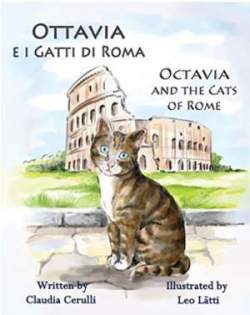
Level: Beginner
This beautifully illustrated children’s book with parallel Italian/English text will delight kids and grown-ups alike.
It tells the story of two adorable kittens, Ottavia and Julius, and their adventures through the ancient ruins in modern day Rome.
At the end of the book is a map of the sites encountered by the kittens, which doubles as a walking route through central Rome.
This book is a fantastic way to get your kids interested in Italian culture or get them involved in your Italian learning. They might even pick up a few words of Italian too!
5. Cristo si e’ Fermato a Eboli by Carlo Levi
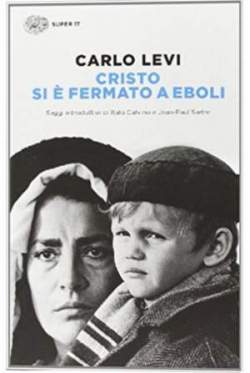
Level: Intermediate
Christ Stopped at Eboli is an excellent first novel in Italian for intermediate readers.
This intensely beautiful and poignant tale is based on the author’s experiences living in exile in an impoverished village in Southern Italy during the fascist regime of Benito Mussolini.
Simple, clear language is used to describe the daily struggles of people in the Italian countryside.
Yet this simple language is nonetheless incredibly vivid, touching and empathetic. It paints unforgettable images for the reader.
Take the time to read it and you will quickly discover why this book is often rated one of the greatest novels in Italian literary history.
6. Il Cucchiaio d’Argento edited by Editoriale Domas
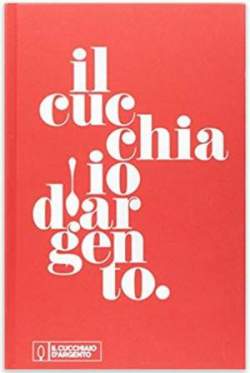
Level: Beginner
This list wouldn’t be complete without an Italian cookbook! And Il Cucchiaio d’Argento isn’t just any cookbook; it's the definitive bible of Italian traditional cooking.
If there's one thing Italians love to talk about, it's food and after flipping through this rather large book, you will no longer be lacking food vocabulary!
Not only will you learn the names of different ingredients, you'll also pick up common kitchen verbs like stir, chop and mix. This is a great way to add a layer of complexity and sophistication to your vocabulary as an intermediate Italian learner.
It’s also a great resource for familiarizing yourself with the command (imperative) form of many verbs as this form is commonly used in the instructions for the different recipes.
7. An Introduction to Italian Poetry: A Dual Language Book, edited by Luciano Rabay
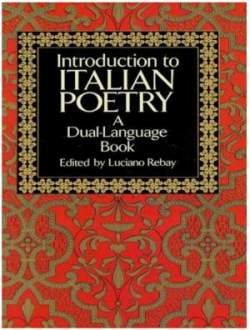
Level: Beginner/Intermediate
Reading poetry is a terrific way to practice reading a language, especially if you don’t have a lot of time in your busy schedule.
Because the poems are so short, you can easily find five or ten minutes to read one and learn a new word or two.
Poetry often isn’t about literal understanding. It’s more about the exploration of emotions and the rhythm and beauty of the words themselves.
So don’t worry about understanding absolutely everything right from the get go. Just take the time to sit down, read and enjoy the beauty of the language. You'll still pick up plenty of new vocabulary along the way.
Why Read In Italian?

There are many benefits of reading in Italian if you want to truly master the language. Let's consider some of main ones:
#1 Reading Is Good For The Brain!
In general, reading in any second language will make you a smarter, more well-informed person.
Acquiring a new language through reading and speaking is associated with brain growth in the Broca's area, a small section of the brain that processes language.
This means there are significant cognitive benefits both to learning a new language and making reading an important part of your learning!
By reading in Italian, you will also become more knowledgeable about a range of cultural topics and gain a deeper understanding of Italians and their psyche.
#2 Reading Helps You Practice Tricky Verbs
One of the biggest benefits of reading is that it reinforces the words and grammatical structures you've been learning in your classes or from your textbook.
For example, reading in Italian is a great way to practice tricky Italian reflexive verbs like piacere (to like).
This verb can be tricky for English speakers because it uses a structure that's quite different to what we're familiar with.
In English, we say “I like”, with the person doing the action of liking something. However, in Italian, the structure is different. For example, a sentence such as “I like strawberries” would be:
- Mi piacciono le fragole
Literally, this means something like “to me they please the strawberries”.
As you can imagine, these kinds of structural differences take a bit of getting used to. They’re very important, however, because you'll come across this verb frequently in everyday Italian.
Using it correctly shows greater fluency than using the simple verb amare to describe things you or others like. Italy is the country of love, but not every Italian loves everything all the time. So, you will sound more Italian saying you just “like” something.
What does this have to do with reading?
Well, the more you read in Italian, the more you'll come across this verb and get to practice it. After seeing piacere a few times in a book you will have a better idea of how it’s used. And be able to use it yourself much more easily.

#3 Reading Exposes You To The Passato Remoto Tense
Furthermore, reading in Italian provides exposure to a tense called the passato remoto.
This tense is used in literature the same way the passato prossimo would be used in regular speech.
The passato remoto is also used in speech to describe events that happened a very long time ago.
However, the definition of what constitutes “a very long time ago” differs by region in Italy.
- the passato remoto is rarely used in speech in Northern Italy
- In Central Italy, it’s used to refer to historical events that happened before one’s lifetime
- In Southern Italy, it may be used to describe events that happened just a few years ago (or even yesterday!)
It’s very useful to be able to recognize this tense because you will encounter it frequently in some parts of Italy.
Because it's so commonly used in literature, reading in Italian is an excellent way to remember familiarise yourself with the passato remoto tense and its conjugations.
#4 Reading Helps You To Grow Your Vocabulary
Lastly, reading, in general, improves vocabulary.
This is doubly true when reading in a foreign language. Both in fiction and in non-fiction, you’re exposed to a wider array of situations than the pre-selected situations that you encounter in the classroom.
In class, you practice situations such as ordering food in a restaurant, applying for a job and talking about your home through simulated dialogue.
This is all very useful but not very exciting. Once you learn to handle the basics like this, you need to learn lots of new, advanced Italian vocabulary in order to really become fluent. And reading is a good way to do this.
What kind of words do Italians use to describe a high-speed police chase or an idyllic villa in the countryside? Reading in Italian (or speaking regularly with Italians) is the only way to really know!
How To Choose The Right Italian Language Books To Read

When deciding what kind of books to read in Italian, the most important question to ask is:
- Do I find the subject of this book interesting?
Reading in a second language can be tough, especially if what you're reading is boring. I never recommend reading things you have no interest in. It will only lead to frustration.
Instead, focus on finding interesting and engaging books that make you want to sit down and practice Italian. Having this kind of motivation in your learning is half the battle.
Plus, if you're reading Italian language books that interest you, you're far more likely to pick up vocabulary that's going to be useful to you.
If you're a beginner or intermediate learner, it's a good idea to start with a book that uses simple, easy language.
Look for something where grammar structures are simpler, words are familiar and paragraphs are shorter.
These books can include travel guides, cookbooks, short story books or even young adult novels.
Non-fiction Italian language books on subjects that interest you are also a good choice, although these can sometimes be a little more challenging!
Another good exercise is to read an Italian translation of your favourite book. When you already know the story, you can just focus on the grammar and vocabulary without worrying that you’ve missed something crucial to understanding the narrative.
Join An Italian Book Club

Book clubs are another way to get Italian language reading ideas. And going to the club meetings helps to keeps you motivated.
If you would like to read socially with other Italian readers, then check out your nearest chapter of the Dante Alighieri Society.
This society promotes Italian culture and they have dozens of centres worldwide.
One of the activities they organize is Italian language book clubs.
If this isn’t an option for you then you could always organize your own Italian beginner's book club through your local library, university or through a website like meetup.com.
Italian Language Books FAQ
What book should I read to learn Italian?
Start with books designed for beginners, such as “Italian for Dummies” or “Practice Makes Perfect: Basic Italian”. If you're looking for graded readers, try “Short Stories in Italian for Beginners” by Olly Richards, which combines simple vocabulary with engaging narratives to help you learn naturally.
Can I learn Italian just by reading?
Reading can help you build vocabulary, grammar knowledge, and comprehension, but it’s not enough to achieve fluency. To truly learn Italian, you need to practise listening, speaking, and writing alongside reading. Incorporating audio resources, conversations with native speakers, and other interactive methods will ensure balanced language skills.
Ready To Get Started With Italian Language Books ?

So, there you have it. Take your pick and find yourself a comfy place where you can relax and indulge in some Italian reading.
Make sure to have a notebook on hand so you can keep track of any important new vocabulary and come back to review it later.
Above all, make sure this is an enjoyable aspect of your Italian learning. So that you’ll want to come back and do it again and again.
Read Italian language books you're interested in and that you'll enjoy. When you enjoy your learning, you can make progress much faster than you might think.
Want To Learn Italian Through The Power Of Story?
Reading Italian language books is a fantastic way to improve your Italian.
In fact, it's my favourite way to learn languages!
That's why I've created a series of story-based Italian courses to help you become fluent in Italian while you enjoy reading fun and entertaining stories.

Italian Uncovered is my story-based programme for beginners. It's my top recommendation for anyone who wants to learn Italian from scratch.
The course is built around a story – L’Uomo Col Capello – and the story is the engine of the course.
L’Uomo Col Capello has 20 chapters, and is written in simple Italian. So you can immerse yourself in Italian at your level, right from the start…even as a complete beginner!
Stories are supposed to be fun. And the story at the centre of Italian Uncovered is no exception!
Three friends find a mysterious note left in a dusty library book. And set off to travel around Italy, following clues left by the mysterious “man in the hat”.
The story is full of suspense. And by following the method I teach in the course, you’ll learn how to read and enjoy it, even if you can’t imagine understanding anything in Italian right now!
You'll be impressed how learning through story keeps you motivated… especially if you've had trouble staying motivated with languages in the past.
Italian Uncovered is as comprehensive as any other Italian programme, but it won’t feel like study at all, because L’Uomo Col Capello introduces Italian grammar and vocabulary naturally, as part of the story. Exactly how reading in Italian ought to be!
Find out more about the course and get your free 7-day trial.

Olly Richards
Creator of the StoryLearning® Method
Olly Richards is a renowned polyglot and language learning expert with over 15 years of experience teaching millions through his innovative StoryLearning® method. He is the creator of StoryLearning, one of the world's largest language learning blogs with 500,000+ monthly readers.
Olly has authored 30+ language learning books and courses, including the bestselling "Short Stories" series published by Teach Yourself.
When not developing new teaching methods, Richards practices what he preaches—he speaks 8 languages fluently and continues learning new ones through his own methodology.









































